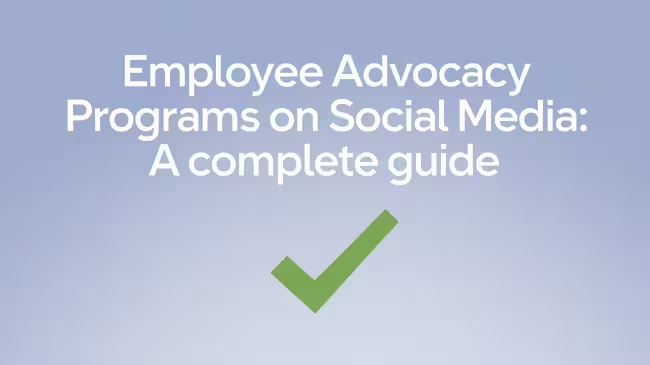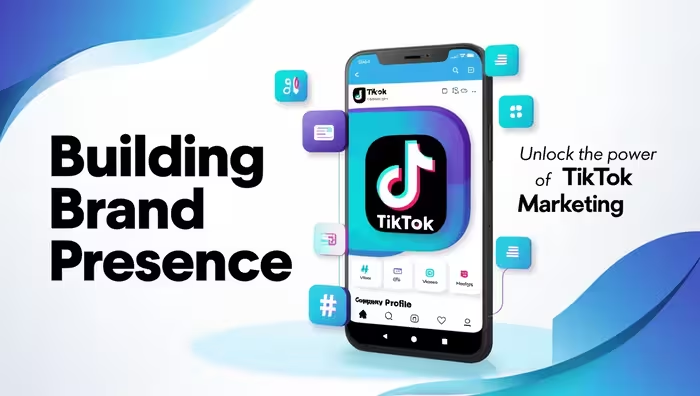Think about this: your employees probably spend hours scrolling through social media every day. What if you could turn those social media hours into powerful marketing opportunities for your company? That’s exactly what employee advocacy programs do! Let’s dive into everything you need to know about turning your team into your biggest cheerleaders online.
What is Employee Advocacy?
Employee advocacy is when your workers voluntarily promote your company’s brand, products, or services on their personal social media accounts. It’s like having a whole team of mini-marketers working together to spread the good word about your business.
But don’t worry – we’re not talking about turning your staff into walking advertisements. Instead, it’s about empowering them to share authentic stories and experiences about their workplace in a way that feels natural and genuine.
Benefits of Employee Advocacy Programs
Increased Brand Reach and Visibility
Did you know that your employees’ combined social networks are typically 10 times larger than your company’s following? When your team shares company content, they’re opening doors to new audiences you might never reach otherwise. It’s like having hundreds of spotlight operators all shining their lights on your brand at once!
Picture this: if you have 100 employees, and each one has an average of 500 social media connections, that’s 50,000 potential new eyes on your brand. The best part? These viewers are more likely to trust content shared by real people they know rather than official company accounts.
Enhanced Brand Trust and Credibility
People trust people, not logos. When your employees share their experiences and insights about your company, it carries more weight than traditional marketing messages. It’s similar to getting a restaurant recommendation from a friend versus seeing an advertisement – you’re more likely to trust your friend’s opinion, right?
Employee-shared content typically receives 8 times more engagement than content shared by brand channels. This happens because personal accounts feel more authentic and relatable than corporate messaging.
Improved Employee Engagement
When employees actively participate in sharing company news and updates, they feel more connected to the organization’s mission and goals. It’s like giving them a stake in the company’s success story. This increased engagement often leads to:
- Higher job satisfaction
- Better workplace culture
- Increased employee retention
- More attractive employer branding
Cost-Effective Marketing Strategy
Traditional advertising can cost a fortune, but employee advocacy programs are surprisingly budget-friendly. Instead of paying for expensive ad campaigns, you’re leveraging your existing workforce’s social presence. It’s like having a marketing team that pays for itself!
Setting Up an Employee Advocacy Program
Creating Program Guidelines
Clear guidelines help everyone understand what’s expected and keep the program running smoothly. Think of these guidelines as the rulebook for a game – they ensure everyone plays fairly and knows how to win. Your guidelines should cover:
- What type of content to share
- How often to post
- Best practices for engagement
- Do’s and don’ts of social media sharing
- Legal and compliance considerations
Selecting the Right Tools
Just like a carpenter needs the right tools to build a house, your employees need the right tools to be effective advocates. Consider platforms that:
- Make content sharing easy
- Track engagement metrics
- Provide scheduling capabilities
- Offer mobile accessibility
- Include gamification features
Popular tools include Hootsuite Amplify, GaggleAMP, and Sprout Social’s Employee Advocacy platform.
Training and Support
Remember learning to ride a bike? You probably needed some training wheels and guidance at first. The same goes for employee advocacy. Provide:
- Regular training sessions
- Clear communication channels
- Quick response to questions
- Updated resources and materials
- Ongoing feedback and support
Best Practices for Success
Content Strategy
Your content strategy is like a recipe – you need the right ingredients in the right amounts. Mix up your content with:
- Company news and updates
- Industry insights
- Behind-the-scenes glimpses
- Employee success stories
- Customer testimonials
- Professional development tips
Make sure the content is easy to share and relevant to both your employees and their networks.
Employee Motivation
Keep your team excited about participating by:
- Recognizing top advocates
- Creating friendly competitions
- Offering incentives
- Sharing success stories
- Making it fun and voluntary
Remember, forced participation often leads to inauthentic content. It’s like trying to make someone laugh – it works best when it’s natural!
Measuring Success
Track your program’s performance using metrics like:
- Reach and impressions
- Engagement rates
- Click-through rates
- Employee participation rates
- Lead generation
- Website traffic from social shares
Common Challenges and Solutions
Every program faces hurdles, but here’s how to jump over them:
- Low Participation
- Solution: Make it easier to share content and provide clear benefits
- Content Quality
- Solution: Create pre-approved content libraries and sharing guidelines
- Consistency
- Solution: Set up regular content schedules and reminders
- Privacy Concerns
- Solution: Provide clear social media policies and training
Real-World Success Stories
Let’s look at some companies that got it right:
IBM encourages its employees to share their expertise on social media, resulting in increased brand visibility and thought leadership. Their employees have become known as “IBMers,” creating a strong corporate identity on social platforms.
Dell’s Social Media and Communities (SMaC) program trained thousands of employees to be brand advocates, leading to improved customer relationships and increased sales through social selling.
Conclusion
Employee advocacy programs on social media are like having a superpower in today’s digital world. They combine the trust of personal recommendations with the reach of social media to create a powerful marketing force.
By following the guidelines and best practices outlined above, you can build a successful program that benefits both your company and your employees.
Frequently Asked Questions
- How do I get started with an employee advocacy program?
Start small with a pilot program involving enthusiastic employees, create clear guidelines, and gradually expand based on lessons learned. - Should employee participation be mandatory?
No, voluntary participation leads to more authentic and effective advocacy. Focus on making the program appealing rather than mandatory. - How can I measure the ROI of an employee advocacy program?
Track metrics like reach, engagement, website traffic, lead generation, and conversion rates from employee-shared content. - What kind of content works best for employee advocacy?
A mix of company news, industry insights, behind-the-scenes content, and employee stories typically performs well. - How can I maintain employee enthusiasm over time?
Keep the program fresh with new content, regular recognition, incentives, and by highlighting success stories from participants.


